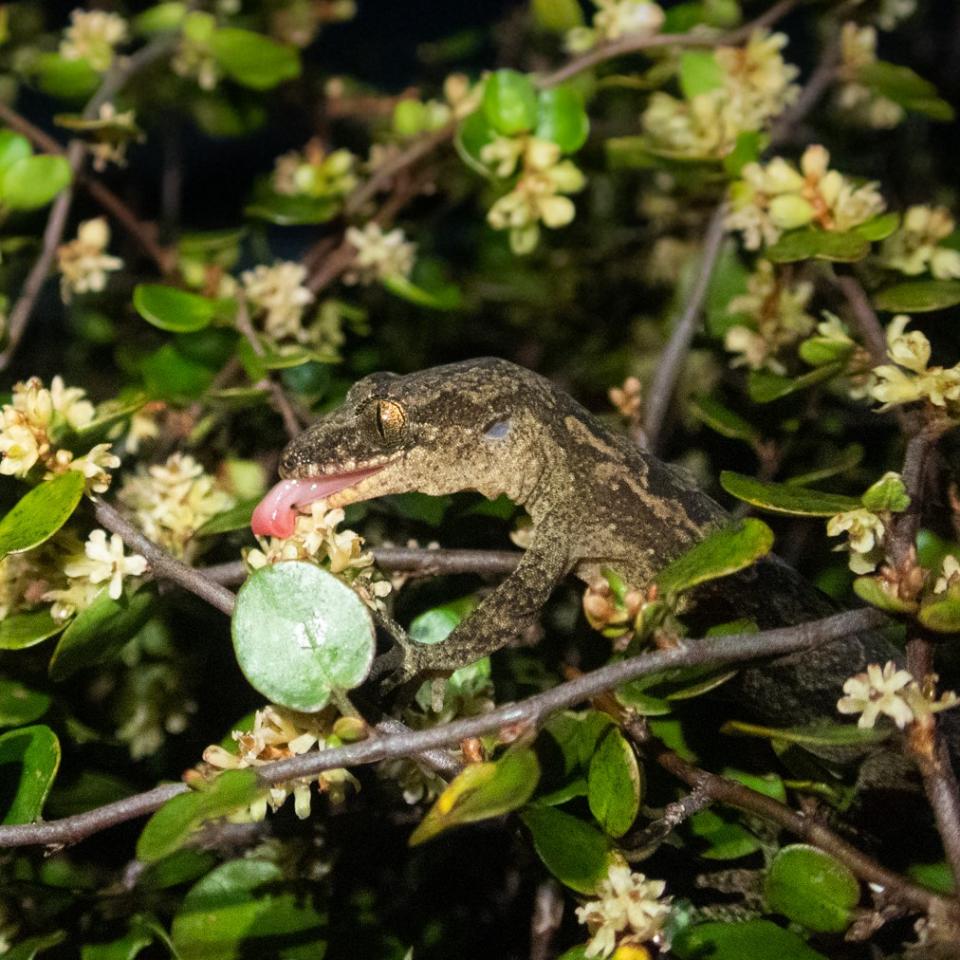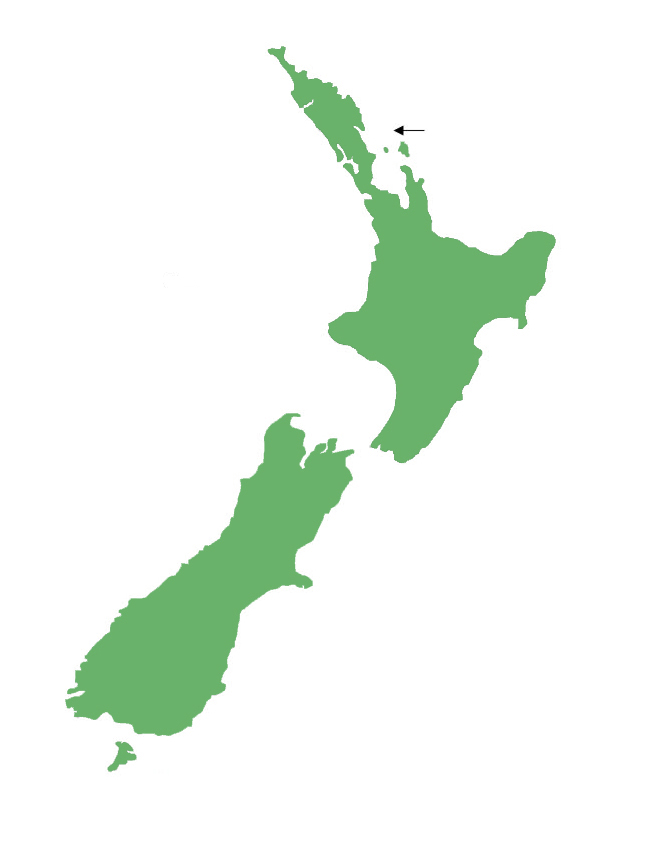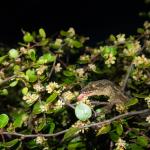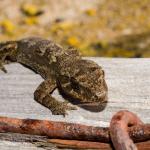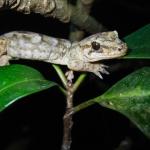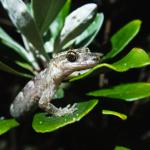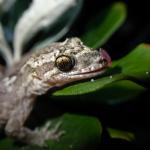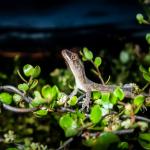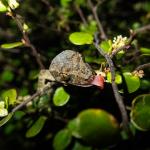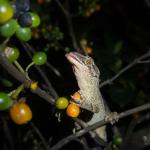- Home
- Herpetofauna Index
- Native
- Dactylocnemis "Mokohinau"
Dactylocnemis "Mokohinau"
Mokohinau gecko
Dactylocnemis "Mokohinau"
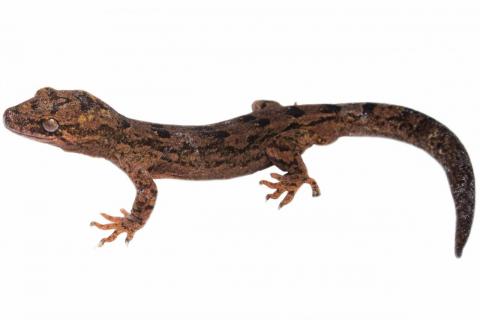
Length: SVL up to 90mm, with the tail being equal to or shorter than the body length
Weight: unknown
Description
Mokohinau geckos are an island-endemic member of the genus Dactylocnemis found only on the Mokohinau Islands 100km north east of Auckland.
Mokohinau geckos are robust in build and highly variable in colour / pattern. Dorsal surface may be grey, brown, or olive in colour and variously patterned with blotches, chevrons, stripes or combinations of these. patterns may be drab / indictinct, or prominent and edged with white or black borders.The dorsal surface of the tail is covered with a series of light coloured blotches. On the head, the rostral scale is in broad contact with the nostril, the labial scales are often white / cream and distinctly paler than surrounding scales, and there is often a mustard-yellow coloured mark on the nape of the neck. Ventral surface (belly) is cream, and may be either unmarked through to heavily speckled with dark-grey or black.
Mokohinau geckos may be confused with the sympatric Duvacel's gecko (Hoplodactylus duvaucelii), but can be distinguished by their much smaller adult size and a lower number of lamellae on the 4th toe of the hind foot (10-14 in Mokohinau geckos versus 15 and over for Duvaucel's geckos).
Very similar in appearance to other members of the Dactylocnemis genus, but geographically isolated.
Life expectancy
Unknown.
Distribution
Mokohinau geckos are endemic to the Mokohinau islands in the outer Hauraki Gulf. The species evolved on these islands and have never been found anywhere else.
Ecology and habitat
Mokohinau geckos are nocturnal but have been known to cryptically sun-bask at the entrance of retreat sites (e.g rock crevices). They are habitat generalists and may be arboreal of terrestrial.
Mokohinau geckos can be found in forest, scrub, flaxland, dense prostrate vegetation (such as Muehlenbeckia sp.), rock piles and on cliffs. When not active they take refuge in rock crevices, dense vegetation tree hollows, or under rocks, logs and loose bark on trees.
Social structure
Mokohinau geckos occur at high densities, and can regularly be found sharing retreat sites with conspecifics (other individuals of the same species).
Breeding biology
Mature female Mokohinau geckos are known to reproduce annually, giving birth to a maximum of two young per litter during late summer or autumn (February-April).
Diet
Mokohinau geckos are primarily insectivorous, but also lick nectar from flowers and consume the fruit / berries of native plants.
Disease
Largely unknown.
Mokohinau geckos have been recorded with ectoparasitic mites in the wild.
Conservation strategy
Mokohinau geckos are endemic to the Mokohinau Islands, and occupy their entire historical range. These islands are pest-free, and as such the main threat to these geckos is from the introduction of mammalian predators to their island refuges.
Many of the Mokohinau islands are protected Nature Reserves where landing is prohibited without a permit from the Department of Conservation, and strict biosecurity measures are adhered to for all island visitors.
Interesting notes
The Mokohinau gecko gets both its common and TAG names from the Mokohinau Islands - the only locality for this species in Aotearoa.
Mokohinau geckos are members of the genus Dactylocnemis, a group of closely related species which are confined to the North Island of New Zealand, are regionally distributed (including several island-endemic species), and were once all considered as a single highly-variable species - Hoplodactylus pacificus.
The Mokohinau gecko belongs to the "southern clade" within the Dactylocnemis genus, with its sister taxa being the Pacific gecko, and Poor Knights gecko. The Matapia gecko also sits within this group but is more distantly related.
References
Hitchmough, R.A., Barr, B., Lettink, M., Monks, J., Reardon, J., Tocher, M., van Winkel, D., Rolfe, J. (2016). Conservation status of New Zealand reptiles, 2015; New Zealand threat classification series 17. Wellington: New Zealand Department of Conservation.
Jewell, T. (2011). A photographic guide to reptiles and amphibians of New Zealand. Auckland: New Holland Publishing.
McCallum, J. (1980). Reptiles of the northern Mokohinau Group. Tane, 26, 53-59.
van Winkel, D., Baling, M. & Hitchmough, R. (2018). Reptiles and Amphibians of New Zealand: A field guide. Auckland: Auckland University Press, 376 pp.

